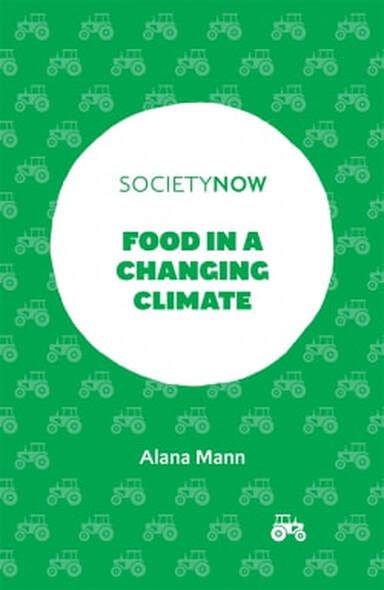
Food in a Changing Climate
Food in a Changing Climate is part of a series called SocietyNow. Books in this series are intended to be ‘short, informed books, explaining why our world is the way it is, now’ and that make ‘the best of academic expertise accessible to wider audience’

Published by Emerald Publishing, 2021
Food in a Changing Climate is part of a series called SocietyNow. Books in this series are intended to be ‘short, informed books, explaining why our world is the way it is, now’ and that make ‘the best of academic expertise accessible to wider audience’. Though short, this book does not quite live up to the accessibility aim. The writing contains too much sociological terminology and the author has an annoying tendency to write through quoting other people, which often does not result in clarity. While it is full of lots of interesting examples and issues it is not always clear what the point is that a particular example is trying to make, or in what way an issue contributes to the argument being made. For example in the chapter, ‘Changing Our Water Ways’ there is a story about McDonalds trying to secure a sustainable supply of fish and collaborating with the Marine Stewardship council. I think the point being made is that what is being given priority is the sustainable supply of fish for ‘Big Food’, as exemplified by McDonalds, rather than the sustainability of fish populations but I’m not sure. My uncertainty is partly because in the introduction to the story the key point is made using a quote that I don’t understand. Another problem is that at some points it feels like things are brought in because Mann wants to say them, rather than because of their relevance to the particular issue under discussion, like her criticism of Australia’s policy on coal at the end of the chapter on Water Ways: valid in itself but I was unclear how it related to fisheries in the Pacific.
What is good about Food in a Changing Climate is the way it sets current food issues in the historical context of colonialism and its legacy. This has created the global inequality we see today where, contrary to Anthropocene narratives, there is no universal ‘we’ responsible for the crises of climate change and biodiversity loss that we now face (p.19). Colonialism resulted in the once colonised becoming simply sources of raw materials for a globalised food system run by a handful of transnational corporations. She gives, as an example, the railway system in Guatemala that was built to facilitate the export of bananas, not to enable Guatemalan’s to get around their own country (p.47). This industrialised food system has focussed on the overproduction of cheap food and the result has been obesity, illness, and malnutrition brought about by the destruction of local food systems. Mann gives several examples of where bringing local communities into the global food system has worsened their diets: pacific islanders who are now amongst the most obese populations in the world following their switch from fish and local vegetables to imported processed foods; Mexicans who now only get a tenth of the catch of fish from their own waters (p.52) and whose food culture of maize and beans has been destroyed by the collapse of small family farms. The result has been the loss of 80% of maize varieties and Mexicans being the world’s top consumers of instant noodles (p.53); and Bolivian farmers who, following its surge in popularity in the West, can no longer afford to eat the quinoa they grow and instead eat rice and noodles (p.76). The global trade in intensively produced chickens results in the cheap off-cuts being dumped in the global South, where this cheap, unhealthy meat, destroys the livelihoods of local poultry farmers (p.125).
Mann is critical of the idea that novel foods, such as synthetic or cultured meats and alternative ‘milks’ are the answer. Rather they are a way for ‘Big Food’ – the large companies that currently control the food system, to reinforce their dominance and appear to be sustainable. She describes the destructive impacts of almonds in the US, where they provide two thirds of the plant-based milks (p.74-5) and how a key ingredient in the synthetic meat being developed by Impossible Foods is heme from a GMO yeast that is grown using sugar. Impossible burgers could thus replace livestock grazed in temperate zones with a demand for sugar produced in the climate-stressed tropics (p.79). Rather than expecting cultured meat or plant-based proteins to provide the solution to the problems of our food system we should look to the sustainability gains that are available now from biodiverse farming practices. In many of these wild game or livestock have an integral role in improving soils as well as supplying protein. We need to move beyond simply tracking carbon emissions to a food system that restores rather than damage nature while providing a resilient supply of healthy food (p.93).
Mann says that her book is a
“response to prevalent discourses that technological solutions and our personal ‘purity politics’ are going to fix our food systems” (p.30).
She says “If we can afford to eat outside the cruel and corrupt global supply chains that generate billions of dollars for Big Food, we should” (p.21)
but this will not be enough to change the food system: eating according to our ethics is insufficient. It may in fact lead us not to press for the changes that are needed, such as consumers of organic food not being concerned about the regulation of conventional agriculture (p.162). We need to address injustice, rather than see the solution as a matter of personal responsibility and individual food ethics.


